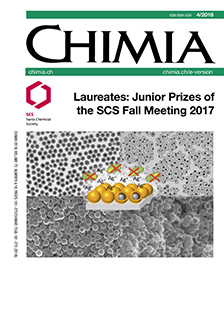Analysis of Inorganic Nanoparticles by Single-particle Inductively Coupled Plasma Time-of-Flight Mass Spectrometry
DOI:
https://doi.org/10.2533/chimia.2018.221Keywords:
Matrix effects, Nanoparticles, Single-particle icpms, Size distribution, Time-of-flight mass spectrometryAbstract
Due to the rapid development of nanotechnologies, engineered nanomaterials (ENMs) and nanoparticles (ENPs) are becoming a part of everyday life: nanotechnologies are quickly migrating from laboratory benches to store shelves and industrial processes. As the use of ENPs continues to expand, their release into the environment is unavoidable; however, understanding the mechanisms and degree of ENP release is only possible through direct detection of these nanospecies in relevant matrices and at realistic concentrations. Key analytical requirements for quantitative detection of ENPs include high sensitivity to detect small particles at low total mass concentrations and the need to separate signals of ENPs from a background of dissolved elemental species and natural nanoparticles (NNPs). To this end, an emerging method called single-particle inductively coupled plasma mass spectrometry (sp-ICPMS) has demonstrated great potential for the characterization of inorganic nanoparticles (NPs) at environmentally relevant concentrations. Here, we comment on the capabilities of modern sp-ICPMS analysis with particular focus on the measurement possibilities offered by ICP-time-of-flight mass spectrometry (ICP-TOFMS). ICP-TOFMS delivers complete elemental mass spectra for individual NPs, which allows for high-throughput, untargeted quantitative analysis of dispersed NPs in natural matrices. Moreover, the multi-element detection capabilities of ICP-TOFMS enable new NP-analysis strategies, including online calibration via microdroplets for accurate NP mass quantification and matrix compensation.Downloads
Published
2018-04-25
Issue
Section
Scientific Articles
License
Copyright (c) 2018 Swiss Chemical Society

This work is licensed under a Creative Commons Attribution-NonCommercial 4.0 International License.
How to Cite
[1]
Chimia 2018, 72, 221, DOI: 10.2533/chimia.2018.221.







